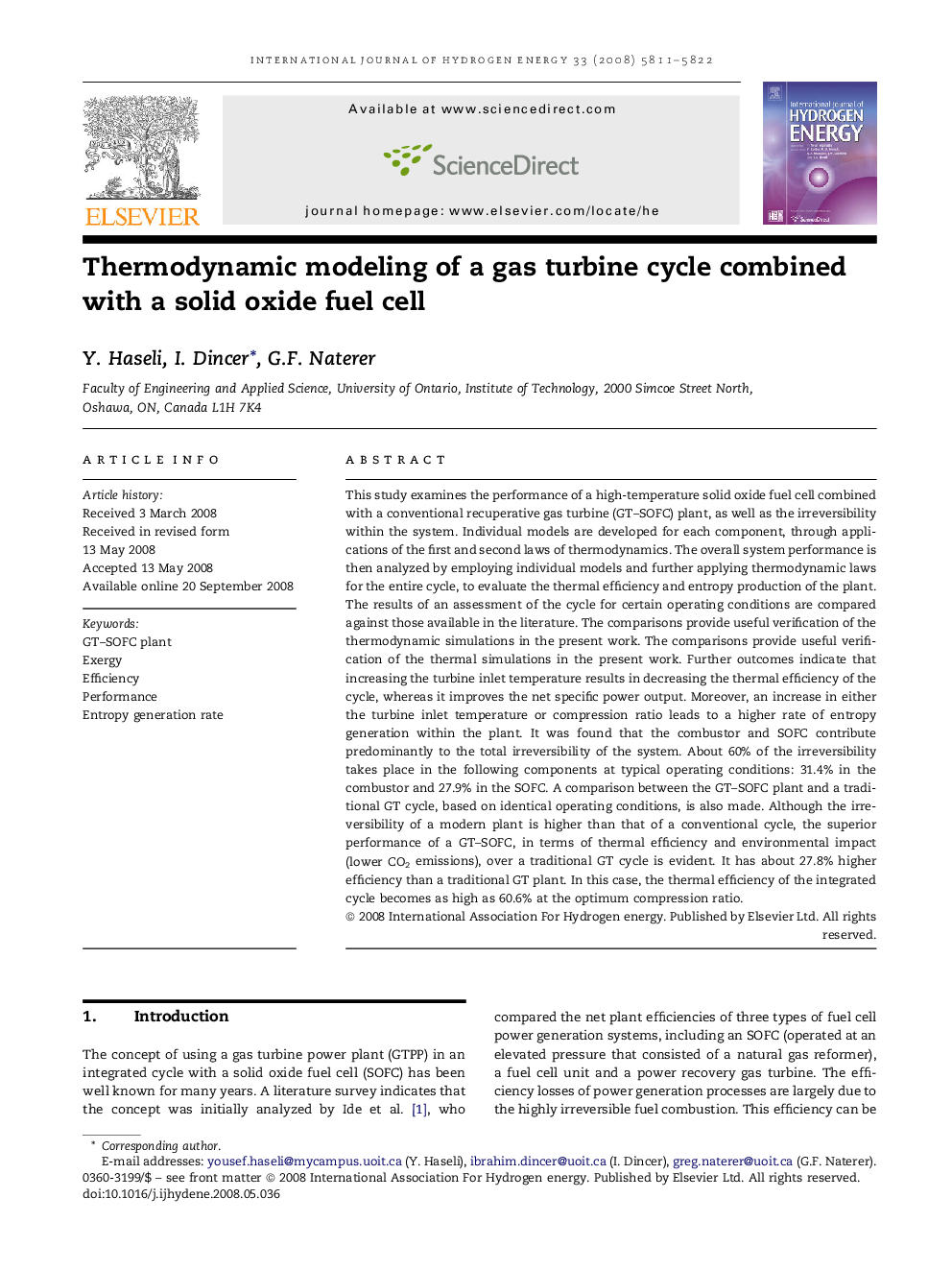| Article ID | Journal | Published Year | Pages | File Type |
|---|---|---|---|---|
| 1278525 | International Journal of Hydrogen Energy | 2008 | 12 Pages |
This study examines the performance of a high-temperature solid oxide fuel cell combined with a conventional recuperative gas turbine (GT–SOFC) plant, as well as the irreversibility within the system. Individual models are developed for each component, through applications of the first and second laws of thermodynamics. The overall system performance is then analyzed by employing individual models and further applying thermodynamic laws for the entire cycle, to evaluate the thermal efficiency and entropy production of the plant. The results of an assessment of the cycle for certain operating conditions are compared against those available in the literature. The comparisons provide useful verification of the thermodynamic simulations in the present work. The comparisons provide useful verification of the thermal simulations in the present work. Further outcomes indicate that increasing the turbine inlet temperature results in decreasing the thermal efficiency of the cycle, whereas it improves the net specific power output. Moreover, an increase in either the turbine inlet temperature or compression ratio leads to a higher rate of entropy generation within the plant. It was found that the combustor and SOFC contribute predominantly to the total irreversibility of the system. About 60% of the irreversibility takes place in the following components at typical operating conditions: 31.4% in the combustor and 27.9% in the SOFC. A comparison between the GT–SOFC plant and a traditional GT cycle, based on identical operating conditions, is also made. Although the irreversibility of a modern plant is higher than that of a conventional cycle, the superior performance of a GT–SOFC, in terms of thermal efficiency and environmental impact (lower CO2 emissions), over a traditional GT cycle is evident. It has about 27.8% higher efficiency than a traditional GT plant. In this case, the thermal efficiency of the integrated cycle becomes as high as 60.6% at the optimum compression ratio.
